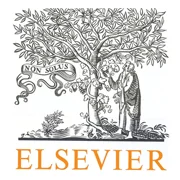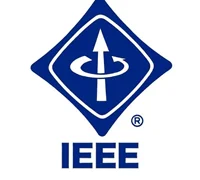دانلود ترجمه مقاله طراحی مبدل بوست برای سیستم های پیل سوختی
| عنوان فارسی |
طراحی و پیاده سازی مبدل بوست چندلایه برای سیستم های پیل سوختی |
| عنوان انگلیسی |
Design and implementation of interleaved boost converter for fuel cell systems |
| کلمات کلیدی : |
سلول سوختی؛ IBC کوپل شده مستقیم؛ SiC؛ تلفات سوئیچینگ |
| درسهای مرتبط | الکترونیک قدرت |
| تعداد صفحات مقاله انگلیسی : 7 | نشریه : ELSEVIER |
| سال انتشار : 2012 | تعداد رفرنس مقاله : 19 |
| فرمت مقاله انگلیسی : PDF | نوع مقاله : ISI |
|
پاورپوینت :
ندارد سفارش پاورپوینت این مقاله |
وضعیت ترجمه مقاله : انجام نشده است. |
1. مقدمه 2. مبدل بوست چندلایه کوپل شده مستقیم 3. روش طراحی برای IBC کوپل شده مستقیم 4. نتایج شبیه سازی تحت کنترل حلقه باز 5. محاسبه تلفات سوئیچینگ برای IBC 6. طراحی و ساخت یک IBC سه فاز 7. نتیجه گیری

چکیده – پیل سوختی یکی از منابع توان تجدیدپذیر و پایدار امیدوارکننده به خاطر چگالی توان زیاد و انتشار آلودگی بسیار کم است. آنرا می توان به عنوان یک منبع انرژی پاک برای کاربردهای مختلف، مانند لوازم الکترونیکی قابل حمل، حمل و نقل و ساختمان سازی مسکونی، مورد استفاده قرار داد. برای طراحی یک سیستم قدرت پیل سوختی پربازده، یک مبدل مناسب DCeDC لازم است. از جمله توپولوژی های مختلف مبدلهای DC/DC، مبدل بوست چندلایه (IBC) به عنوان یک رابط مناسب برای پیل های سوختی برای تبدیل جریان ورودی زیاد و ولتاژ پایین به یک خروجی ولتاژ بالا و جریان کم، مورد استفاده قرار داد. مزیت های مبدل بوست چندلایه در مقایسه با مبدل بوست کلاسیک، عبارتند از ریپل جریان ورودی کم، بازده زیاد، پاسخ گذرای سریعتر، کاهش آلودگی الکترومغناطیسی و بهبود قابلیت اطمینان. در مبدل چندلایه پیشنهادی، سلف های جلویی، تزویج مغناطیسی پیدا می کنند تا عملکرد الکتریکی بهبود یابد و وزن و اندازه کاهش یابد. این مقاله بر یک IBC تزویج مستقیم سه فاز با استفاده از ترانزیستور CoolMOS و دیود کربید سیلیکان (SiC) بجای دو فاز کلاسیک گزارش شده در ادبیات براساس تعادل بین محتوای ریپل، هزینه و پیچیدگی، تاکید می کند. تحلیل ریاضیاتی ریپل جریان کلی، معادلات طراحی و مطالعات تلفات کلیدزنی برای IBC ، ارائه شدند. شبیه سازی IBC متصل شده به پیل های سوختی، با استفاده از MATLAB/SIMULINK انجام شد. نمونه اولیه های سخت افزاری ساخته شد تا نتایج اعتبار یابی شوند. نتیجه گیری: این مقاله، مطالعه و طراحی یک IBC تزویج مستقیم سه فاز برای پیل های سوختی را ارائه داد. رابطه بین ریپل جریان فاز، ریپل جریان ورودی برحسب نسبت وظیفه و ضریب تزویج، تحلیل می شود. معادلات طراحی برای IBC ارائه شدند. عملکرد IBC برای القاگرهای تزویج نشده و تزویج مستقیم، مورد مطالعه قرار می گیرد. نشان داده می شود که مبدل DC/DC چندلایه تزویج مستقیم، به میزان موثری ریپل جریان کلی را در مقایسه با القاگرهای تزویج نشده، کاهش می دهد. تلفات کلیدزنی هر دو مجموعه از ترکیبات قطعات برای IBC ، با هم مقایسه می شوند: MOSFET IRFP460A و دیود SI مدل MUR1560، ترانزیستور CoolMOS و دیود شاتکی SiC مدل CSD 100060. انتخاب دیود SiC و ترانزیستور CpplMOS برای IBC منجر به کاهش تلفات سوئیچینگ می شود. با توجه به این نتایج، IBC کوپل شده مستقیم با ترانزیستور CoolMOS و دیود SiC، کاندیدهای مناسبی برای رابط سلول سوختی می باشند.
Fuel cell is one of the promising renewable and sustainable power sources because of its high power density and very low emission. It can be utilized as a clean power source for various applications such as portable electronic appliances, transportation and residential building. In order to design a highly efficient fuel cell power system, a suitable DC–DC converter is required. Among the various topologies of DC–DC converters, interleaved boost converter (IBC) has been proposed as a suitable interface for fuel cells to convert low voltage high current input into a high voltage low current output. The advantages of interleaved boost converter compared to the classical boost converter are low input current ripple, high efficiency, faster transient response, reduced electromagnetic emission and improved reliability. In the proposed interleaved converter, the front end inductors are magnetically coupled to improve the electrical performance and reduce the weight and size. This paper focuses on a three-phase directly coupled IBC using CoolMOS transistor and Silicon carbide (SiC) diode instead of the classical two-phase reported in the literature based on the tradeoff between the ripple content, cost and complexity. Mathematical analysis of overall current ripple, design equations and switching loss studies for IBC have been presented. Simulation of IBC interfaced with fuel cells have been performed using MATLAB/SIMULINK. Hardware prototypes have been built to validate the results. Conclusions: This paper has presented the study and design of a three-phase directly coupled IBC for fuel cells. The relationship between phase current ripple, input current ripple versus duty ratio and coupling coefficient is analyzed. The design equations for IBC have been presented. The performance of IBC is studied for uncoupled and directly coupled inductors. It is demonstrated that the directly coupled interleaved DCeDC converter effectively reduces the overall current ripple compared to that of uncoupled inductors. The switching losses of two sets of device combinations for IBC have been compared: the MOSFET IRFP460A and the Si diode MUR1560, the CoolMOS transistor and SiC Schottky diode CSD 100060. The choice of SiC diode and CoolMOS transistor for IBC has led to reduced switching losses. From these results, directly coupled IBC with CoolMOS transistor and SiC diode proves to be a suitable candidate for fuel cell interface.



دیدگاهها
هیچ دیدگاهی برای این محصول نوشته نشده است.